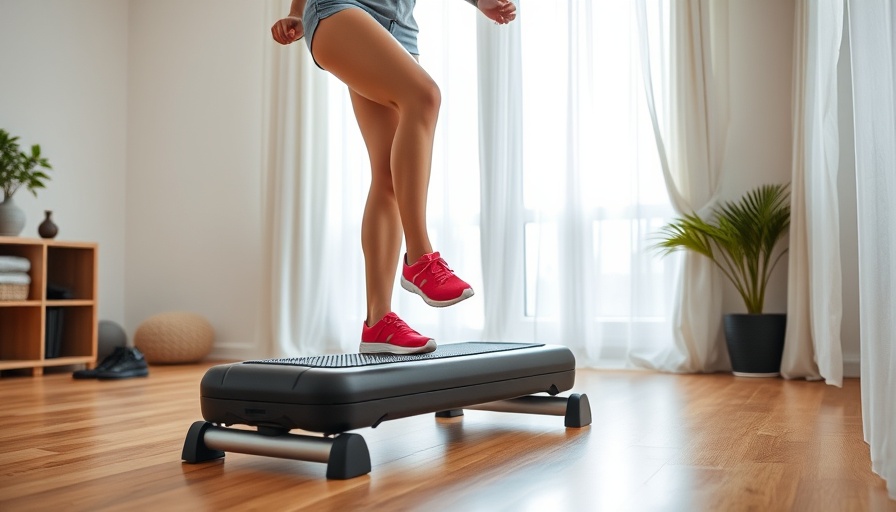
The Rise of Low-Impact HIIT: A Game Changer for Fitness
In recent years, fitness enthusiasts have seen a significant shift in workout trends, particularly towards low-impact high-intensity interval training (HIIT). This style appeals to individuals who want an intense workout without the wear and tear on their bodies. Tasha from fitness.com expertly explains this concept in her 15-Minute Bodyweight Low Impact HIIT, showcasing that low-impact workouts can still deliver high results.
In the video '15-Minute Bodyweight Low Impact HIIT,' Tasha presents a refreshing approach to fitness, highlighting its applicability for all, especially in the SDA community.
Understanding Low-Impact Workouts
Low-impact workouts are designed to minimize the stress on joints while still providing cardiovascular benefits. They include exercises that are typically gentler, like walking and cycling, but with HIIT, they become intense through rapid shifts in motion and elevated heart rates without risking injury. Tasha’s approach exemplifies this, focusing on full body movements that engage all muscle groups without leaving the ground.
The Benefits of Low-Impact HIIT for Everyone
Low-impact HIIT offers multiple benefits. First, anyone, from beginners to seasoned athletes, can participate without excessive worry about injuries associated with high-impact workouts. This is particularly relevant for members of the SDA faith community, who may prioritize physical well-being as part of their holistic lifestyle. Moreover, these workouts help improve cardiovascular health, strength, and flexibility, contributing to overall wellness.
Practical Takeaways for Your Fitness Journey
Taking Tasha's low-impact HIIT workout as inspiration, here are some practical insights you can incorporate:
- Warm-Up Effectively: Always start with a thorough warm-up. Tasha’s quick warm-up strategy prepares your body for action, reducing the risk of injury.
- Listen to Your Body: Adjust exercises based on your personal fitness level. Modifications make workouts accessible to everyone.
- Engage the Core: Focus on core stability to enhance balance and strength, crucial in low-impact routines.
- Cue Your Mind: Mental focus plays a vital role in performance. Tasha emphasizes awareness of body movements to maximize effectiveness.
Counterarguments: Is Low-Impact Enough?
Some skeptics argue that low-impact workouts may not yield the same results as traditional high-impact workouts. Critics often associate intense exercises with significant calories burned, yet many fail to recognize that muscle engagement and heart rate elevation do not solely depend on jumps and bounding movements. In fact, research shows that low-impact HIIT can engage muscles just as effectively, leading to similar cardiovascular benefits while being kinder to the joints.
The Importance of Community in Fitness
Fitness is often seen as a solitary endeavor, but bringing a community aspect, especially for the SDA church members, can enhance motivation and accountability. Whether it’s engaging in group workouts or sharing fitness goals, having a support network encourages sustained participation. Videos like Tasha’s can become a central part of community gatherings or online group sessions, fostering unity through shared health pursuits.
Incorporating Spiritual Practices with Fitness
Integrating spiritual practices with physical activity can elevate the experience. Members of the SDA community often find that prayer or meditation before workouts helps center the mind. As you embark on a fitness journey, consider incorporating gratitude practices for body health and wellness, enhancing the connection between physical and spiritual well-being.
Final Thoughts: Embrace the Low-Impact Lifestyle
It’s clear that low-impact workouts like the one demonstrated by Tasha challenge misconceptions about low intensity. As we engage in more mindful physical activity, we promote better health outcomes without compromising joy in movement. The approach is not just about working hard but also about working smart, staying connected with our bodies, and incorporating spiritual wellness into fitness.
In interest of deepening your fitness journey, I invite you to explore Tasha's 15-Minute Bodyweight Low Impact HIIT workout and experience firsthand the power of low-impact training—together, we can redefine our connection to health and movement.
 Add Row
Add Row  Add
Add 




Write A Comment